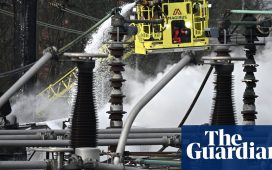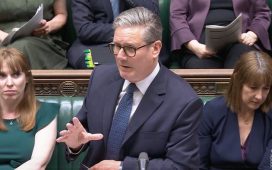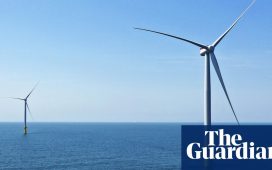The UK government risks squandering a “God-given” opportunity to kickstart the economy and accelerate the shift to renewable energy by failing to reform the planning process for big infrastructure projects, the head of Scottish Power has warned.
Keith Anderson, chief executive of Scottish Power, said that almost two years into the energy crisis the government needed to focus on helping companies speed up the development of wind farms that can help replace expensive gas.
“It only takes us two years to physically build an offshore wind farm but the planning process is fundamentally flawed and means it takes us more like 10 years,” Anderson told the Financial Times.
“We have got a God-given project of work in this country that’s ready to go, the money is there,” he said. “It would kickstart the economy after Covid and the gas crisis and spread investment throughout the country, with money filtering down through local supply chains,” he added, describing it as “an absolutely colossal opportunity.”
The assessment from the head of one of the UK’s biggest energy suppliers comes after the National Audit Office this week warned that the newly formed Department of Energy Security and Net Zero was behind schedule in mapping out how to achieve a rapid expansion of offshore wind and nuclear power.
The department and its predecessors had been too focused on mitigating the short-term pain of skyrocketing energy bills to the detriment of its long-term strategy, the NAO said.
Anderson, who was among the first to propose support for customers under a plan that eventually became the government’s energy price guarantee, said he had always cautioned this was just a “sticking plaster” for the immediate crisis and that a more enduring solution to support the vulnerable was needed.
The government needed to speed up the permitting process if it wanted wind power to rapidly replace gas in the system, and accelerate improvements in the network too, he argued.
“The wind farms that are coming online today were approved when [former Labour prime minister] Gordon Brown was in power — that’s a long time ago and we need to be much faster to move beyond this crisis”, Anderson said.
The UK is targeting a more than tripling of offshore wind capacity to 50GW by 2030 as part of its energy security strategy following Russia’s full-scale invasion of Ukraine.
Scottish Power has more than 40 onshore wind farms and is developing several offshore projects in UK waters, including the 1.3GW East Anglia Three project as well as three sites in Scottish waters on which it is partnering with Shell that could produce up to 7GW.
Britain’s large coastline and relatively shallow waters make it one of the best sites for offshore wind developments and it already boasts the world’s biggest active farms.
Anderson conceded that the cost of developing wind farms had risen as the price of key commodities such as steel and copper had jumped. But unlike rivals Vestas and Orsted, which have warned they may need to shelve planned projects without additional tax breaks in the government’s March Budget, Anderson was more circumspect.
The next licensing auctions were likely to see higher prices, he cautioned, but wind power was likely to remain the cheapest form of new electricity.
“Onshore and offshore wind and solar are still the cheapest form of new electricity capacity for the UK,” he said. “If you look at what’s creating the cost pressure, it’s the rising price of steel and copper — that would affect new-build gas stations, carbon capture or nuclear too,” Anderson added.
The chief executive said he broadly supported the government continuing to cap the typical UK household gas and electricity bill at £2,500 — as is being discussed by chancellor Jeremy Hunt and energy secretary Grant Shapps — given the recent sharp drop in wholesale energy prices.
The government’s price guarantee is currently slated to rise to £3,000 in April, a move campaigners have warned could double the number of people in fuel poverty. Household bills are expected to fall in the second half of this year as lower wholesale costs feed through.
“Obviously the cost of keeping it at £2,500 has come down massively so there’s a strong argument for doing it,” Anderson said.











